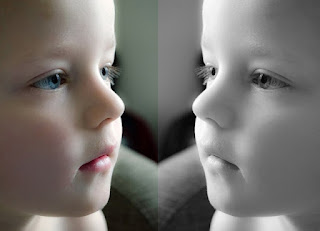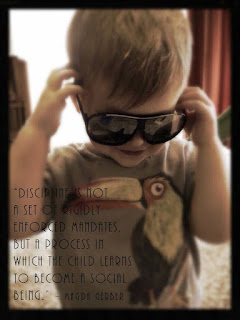Empowering Toddlers: Encouraging Parents to Abandon the “Bully/Victim” Mentality
In every toddler group, there is a broad range of
personalities that emerge. Often, one child is “the quiet one”, another is “the
daredevil”, and invariably one is “the bully”. There are many problems that come from using these labels, but setting those
aside, let’s talk about aggression in toddlers – specifically, what to do in
the moment, depending on whether your child is the aggressor, or the recipient
of aggression.
I have many memories of bullying and aggressive behavior in
my childhood, though I don’t remember much from my toddler years. In my younger
years, I was most often the victim of bullying, while in high school (and even
college to some extent), while I still felt like a victim fairly often, I also
relished the power that came with being the aggressor. Through all my
experiences in elementary and middle school, one common thread was that I
constantly felt that the adults who were supposed to protect me were not there
for me.
I had a revelation recently about my response to my son
being in a social situation where I perceived him as the “victim” of a “bully”.
My first mistake was assuming that my perception of the situation was accurate,
when what my son actually saw was not charged with the memory of my emotional
experiences like it was for me. Toddlers to not perceive, nor do they act with,
malicious intent. I ran to him when I saw his quivering lip, gathered him up in
my arms, and (in an ‘oh poor baby’ voice) said, “You were playing with that and
he took it away from you!” Bam! I threw him into that victim role without his
consent! Imagine if I responded to him this way repeatedly throughout this most
formative time in his life. I, the person he loves and looks up to most in the
world, made it clear that he was the victim of this other child and that he
needed me to “make it better”. That is not the message I want my child to
receive and believe about himself and others.
I realized that when I was a young child, my mom looked at
the world, to a certain degree, as being against her, and thus against me. I
believe she responded to me from that place. I believe, with all the best
intentions of connection, trust, and empathy, that she taught me, with her
responses, that I deserved and needed adults (and others) to protect me. I learned
that I was not capable of protecting myself, or of dealing with big emotions on
my own. I learned that the situations that upset me must have been serious
enough to upset her as well, and to warrant a “rescue” response.
I want to teach my son something different. I want to teach
him that he IS capable of standing up for himself, that he is strong enough to
handle whatever life throws at him, and that I am strong enough to be his rock.
And I want him to understand that while he can’t change other people, his power
lies in his ability to choose his reactions to the things that happen to him. I
realized that for him to make those decisions about the world, I have to be
mindful of the way I respond to him now when he is two years old. I don’t do it
perfectly all the time, because I still carry the decisions I made about the
world when I was his age, but with that awareness, I am working to establish
new habits; new responses to the things that happen to me — and to him.
Research has shown that over-involved parenting is linked to
anxiety. Additionally, that relaxed and calm parenting while the child is under
stress (e.g., trying to accomplish a difficult task) leads to better child
outcomes (see: Mitchell, J., Broeren, S., Newall, C., and Hudson, J.L. (2013).
An experimental manipulation of maternal perfectionistic anxious rearing
behaviours with anxious and non-anxious children. Journal of Experimental Child
Psychology, 116, 1-18.). This means that our responses shift our children’s
perception of stress. If we want our children to be able to respond calmly, we
have to model that for them. This means that instead of using affection or
attachment methods to calm our children in situations that do not call for
extreme emotional disturbance, it is more effective to remain calm and respond
confidently – empathizing with emotions, but generally ignoring associated
behaviors. We respond to the feeling, not the physical manifestation of tears
and upset or of aggression.
When my child is the aggressor, I will calmly, but
firmly prevent him from causing harm to others. If he attempts to hit or bite,
I will block the contact while saying, “I won’t let you hit.” If he seems to
need additional support, I will move away from the immediate situation with him
and say, “You seem to be feeling strongly. Let’s move over here until you are
ready to be gentle. I will sit with you.” I will take this opportunity to
connect with my child and help him feel good, because when children feel
better, they do better.
If he is taking toys and the other child seems upset, I
will sportscast the
interaction to both children, describing what I see without judgment and
observing any emotions that seem to be surfacing. I will validate and accept
emotions, while setting
firm limits on unacceptable behaviors. If my child demonstrates a
tendency to be overly persistent in his behavior, I will consider it an
exception to my general rule of non-intervention; I will increase
my involvement and my limit setting, saying something like, “___ is playing
with this right now. Please find something else to play with.”
When another child is the aggressor, I will
calmly, but firmly prevent the other child from causing harm to others,
blocking contact as above. I will encourage
both children to use “no!” to empower them to respond without being
physical. If my child is hurt or upset, I will move in calmly and empathize
without showing my emotions. He can see my emotions at other times, but when he
is overwhelmed, he needs me to be his rock. I will quietly
offer my presence, but I will not offer comfort unless he requests it from
me, because I want to allow him to experience his own feelings, not mine. I
will acknowledge and empathize with his feelings, but I will make sure my
response does not reinforce his distress or anxiety. I may place my hand on him
to let him know I am there, but I will speak about the situation in neutral
terms. Afterward, I will remind him again that he can say “No!” or “Stop! I’m
playing with this!” when he needs someone to back off.
I was fortunate after that first experience to have a group
of parents I look up to, who I turned to for support. When I asked how I should
have responded to that situation, their answers blew me away. I had never had
my eyes opened to my own victim-tinted glasses in a way that I could process!
Once I realized what a profound effect my perception of the world could have on
my child, I decided to respond differently. I have found that my response is
similar not only when another child is the aggressor, but at any time when my
son experiences distress, including his increasingly common experiences with
the “bumps and bruises” of toddlerhood. I empathize with his feelings, but I
resist getting sucked in, which allows me to be unruffled and
to keep responding from a place of strength.
I hope that by empowering my child now, he will grow up to
be one who chooses to stand up for himself and others like the young teens
in this
video.





Comments
Post a Comment